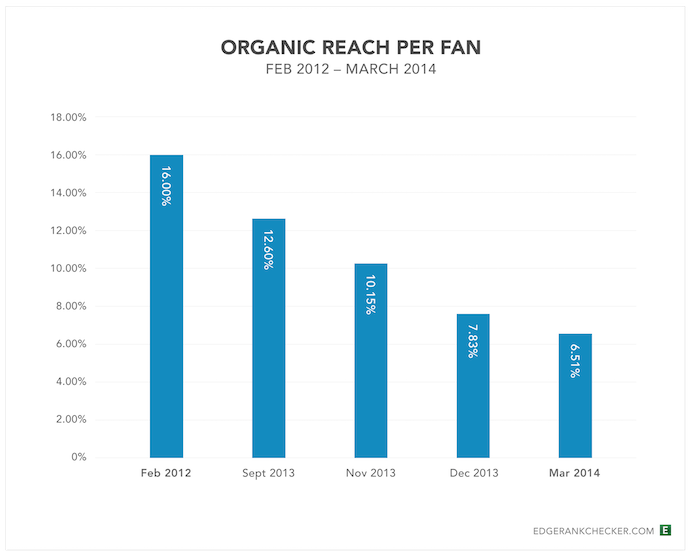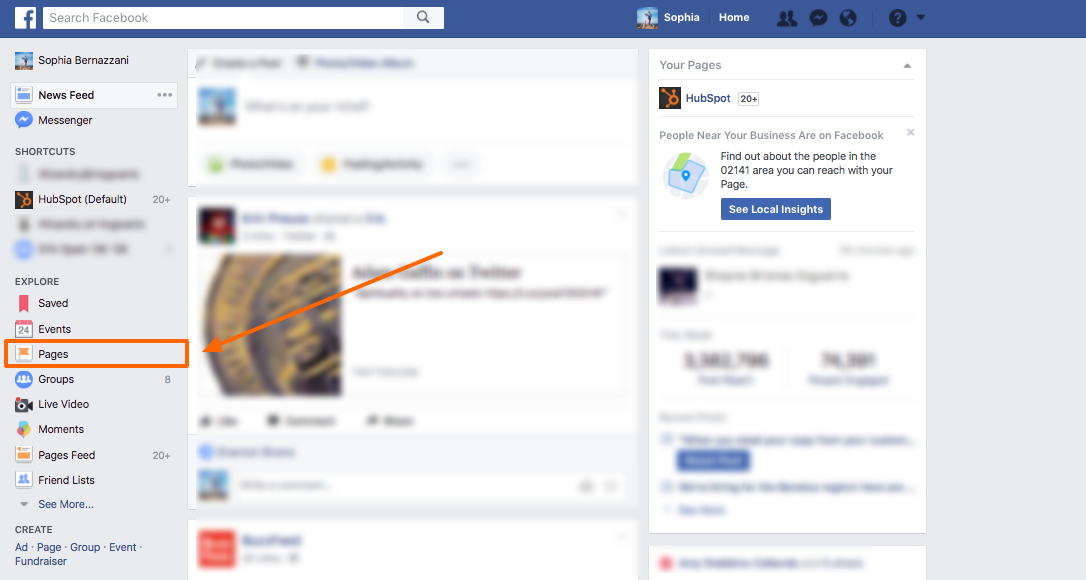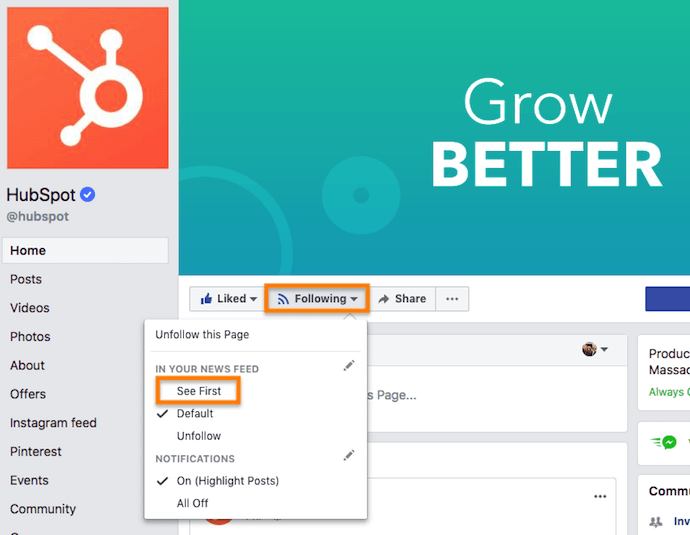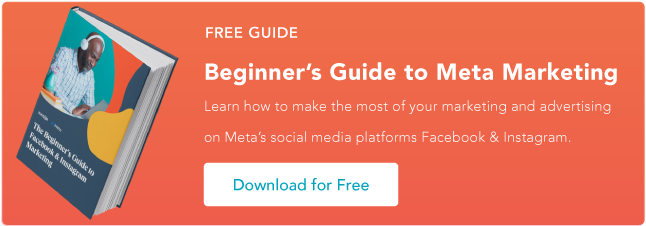how to find past events on facebook
If you've been managing a Facebook Business Page over the past few years, you've likely noticed a drop in how many of your fans have been viewing and interacting with the organic posts you publish to that page. There are two reasons for this. This observed decline in organic Facebook reach began in 2014, when Brian Boland, Facebook's VP of Advertising Technology (at the time), said Facebook is simply managing more ad content than it used to, and News Feed space is thus more competitive among marketers. Boland, now Facebook's VP of Publisher Solutions, is right. There's simply too much content being published on Facebook, making visibility in the News Feed increasingly competitive. And Facebook strives to show people the content that is most relevant to them, as opposed to surfacing all the content available. More recently, you might've noticed a greater dip in the organic reach of your Facebook content because of an important change to Facebook's News Feed algorithm. In January 2018, according to Facebook's Head of News Feed Adam Mosseri, Facebook began to "shift ranking to make News Feed more about connecting with people and less about consuming media in isolation." As a result, marketing content was poised to take a backseat to content by friends and family -- a value that Facebook says it originally had, and that it's trying to return to. The good news in all of this is that there's a lot you can do to counteract these changes, like being more selective about what you publish, paying attention to when you publish, and putting money behind your posts (a.k.a. "boosting" them). Before we dive into how you can improve your Facebook Page's organic reach and reengage your Facebook followers, let's explore exactly how Facebook's News Feed algorithm works. Then, we'll see how various algorithm changes -- including its 2018 update -- have affected the reach of a marketer. When Facebook first launched News Feed back in 2006, the algorithm was pretty basic. Different post formats were assigned different point values -- so a post with just text might be worth one point, while a post with a link in it might be worth two points, and so on. By multiplying the post format point value by the number of people interacting with a given post, Facebook could generate a ranking system for determining the order in which posts would appear. As the years rolled on, the News Feed algorithm evolved to factor in the recency of posts, as well as the relationship between the person doing the posting and the person interacting with said post. This iteration of the algorithm was known as EdgeRank. But in 2011, Facebook abandoned EdgeRank for a more complex algorithm that incorporates machine learning. That machine learning-based algorithm is what's responsible for surfacing content on your News Feed today. Unlike its predecessors, which assigned generic point values to post formats, the current algorithm adapts to individual user preferences. So, for example, if you never, ever, interact with photos in your News Feed, Facebook's algorithm will pick up on that and show you fewer photos over time. On the other hand, Facebook has identified for marketers the content formats that drive engagement and sharing -- native and live videos. Facebook ranks live videos higher in the News Feed, as well as videos with higher watch and completion rates and videos that are clicked on or unmuted as signals of viewer interest. Ultimately, there are thousands of factors that inform Facebook's algorithm of a meaningful interaction. These factors range from using trigger words that indicate important events (e.g., "congratulations") to whether or not you've actually clicked a link in a post before liking it. Today, Facebook rewards the content that produces these interactions the best: person-to-person content. Facebook's end goal here isn't just to match News Feed content to the individual interests of each user -- it's to display News Feed content that reveals connections between each user. As Facebook's Head of News Feed Research Lauren Scissors said in a 2018 press release: "Interacting with people ... is associated with a greater sense of well-being. And the benefits [to the content creator] are even stronger when you're close to the person, and when the interaction requires some effort." Facebook defines organic reach as "how many people you can reach for free on Facebook by posting to your Page." Prior to 2012, that number used to be much, much higher than it is now. From the moment "Fan Pages" launched in 2007, anyone could create a Page for their company or organization, start collecting fans, and post unlimited messages to their fan bases with the assumption that they would see those messages. When 2012 rolled around, Page managers learned that only a fraction of their Facebook fans -- 16% on average -- were seeing their Page posts in their News Feeds. And that fraction got significantly smaller in 2014. A study from Edgerank Checker found that between February 2012 and March 2014, organic reach for the average Facebook Page dropped from 16% to 6.5%. Research from Social@Ogilvy, meanwhile, suggests that for Pages with more than 500,000 Likes, organic reach could be as low as 2%. Based on the figures above, that means a Page with 10,000 fans could expect just 650 of them to actually see that Page's posts in their News Feeds. For a Page with 1 million fans, about 20,000 would end up seeing posts (based on the 2% figure). SocialFlow analyzed more than 3,000 posts by publishers on Facebook and found that organic reach dropped 42% between January and May 2016. Then, later in 2016, Facebook adjusted its News Feed algorithm again, to further prioritize content from friends and family over Pages. This likely makes News Feed's current condition less surprising ... In the blog post announcing the algorithm change, Facebook Engineering Director Lars Backstrom warned that Pages could anticipate a dip in organic reach -- which could leave reach lower than that earlier 2% estimate, in some cases. After this algorithm adjustment, SocialFlow adjusted the decline in organic reach -- which had dropped further. Between January and July 2016, publishers saw a 52% decline in organic reach on Facebook. Facebook's biggest algorithm update for 2017 wasn't an algorithm update, but rather a new News Feed entirely. In October of that year, Facebook tested an ad-free News Feed that users could switch to, dedicated to publisher content rather than personal content. To brands, it clearly foreshadowed a Facebook that separated Pages content from friends and family content. Today, that "alternative News Feed" is known as the "Pages" option on the lefthand sidebar of a user's News Feed. Just days after Facebook launched this alternative News Feed test, a social media manager for a newspaper in Slovakia reported that 60 of the largest media pages in the country saw their likes, comments, and shares decrease fourfold. Facebook's recent incident of data misuse by analytics firm, Cambridge Analytica, prompted Facebook to deeply address the privacy of users who don't want their personal information exploited in various ways. But this process was preceded by a similar yet unrelated News Feed update to focus less on content from Pages and more from a user's friends and family. This update to Facebook's News Feed algorithm doesn't eliminate Page content from News Feeds entirely, but this update does set different priorities for which content gets prime News Feed real estate. According to a private Facebook webinar hosted in January 2018, those priorities are: Shares and comments, in particular, are considered "active" interactions, which Facebook considers more "meaningful" when slotting content on a user's News Feed. For that reason, the company notes that video watch time, referral traffic, and organic reach might decrease this year if the content doesn't doesn't stir up a meaningful interaction. Fewer people seeing your Page's organic posts on Facebook means fewer clicks, comments, and shares. And having fewer of those interactions means fewer conversions, leads, and customers. But this is only the case if your content doesn't attract comments and shares to begin with. So, why would Facebook decide to decrease organic post visibility in favor of friend and family content in the first place? How can a marketer create content that competes with the natural appeal of a friend's new baby picture? We already touched on Facebook's official response to the first question in the introduction: There are simply too many Pages producing too much content for too many fans, which means competition for visibility on the News Feed is high. What's more, Facebook is trying to make sure people are only seeing the best content -- the stuff that is most relevant to them. Some publishers have cracked the code when it comes to engagement on Facebook: by publishing and broadcasting video. (And we'll get into that later in the post.) But many in the marketing world suspect that Facebook had (and still has) an ulterior motive: to get people to start spending more on ads and "promoted" content. So, should you invest in more ads and paid content to get the exposure you want? As Facebook has evolved into more of a paid marketing platform than an organic one, Page managers are realizing they're now expected to pay for ads yet again to reach those newly acquired Fans, even if those Fans have seemingly elected to see a brand's posts by liking their Page in the first place. From Facebook's perspective, it's simply not an ideal user experience to flood the News Feed with posts just because a Page has lots of Likes and is publishing prolifically. Nowadays, Facebook is encouraging marketers to look at their fan bases as a way to make paid advertising more effective rather than using it as a free broadcast channel. Additionally, Facebook says you should assume organic reach will eventually arrive at zero. So, if you really want to reach your target audience on Facebook, you'll need to supplement your organic efforts with some paid advertising. Should you trust Facebook? Are paid ads on Facebook worth it? They can be -- especially if they're part of a longer content campaign, and can stimulate interest in a story that users might not see otherwise. Learn more about how to advertise on Facebook effectively in Step 8 further down in this article. Now that you've got a better understanding of how Facebook surfaces content, let's explore some tips for dealing with the decline in organic Page reach. Marketers have to switch gears from untargeted, frequent publishing to targeted, selective publishing. The goal is no longer to spray and pray -- it's to get as much interaction from a single post as possible. Each post published to a brand Page can be targeted to a specific audience regardless of whether or not it's sponsored, which may improve overall interaction with that post among other people who are likely to find it more interesting and relevant. This can be as simple as adding a reminder to "Please Like and share" at the end of your posts. Videos on Facebook are engaging and make visitors more likely to stop, watch, and maybe even unmute when they spot them in the News Feed. Use videos with captions, animations, and engaging visuals to draw in Facebook users' attention. According to a recent study by quintly, native Facebook videos have an 186% higher engagement rate and are shared more than 1000% more than videos linked to from other hosting sites. Take the extra steps to publish videos for the platforms you're promoting them on for best results -- distribute your content on Facebook, YouTube, and other social platforms you're trying to leverage. If you're not already doing so, start broadcasting on Facebook Live. Users spend 3X more time watching live broadcasts than traditional videos on the platform, so start experimenting with live content if you're concerned about your organic reach. Advertise what you're doing on different platforms to generate buzz, broadcast for several minutes (at least) to help your broadcast get surfaced in the News Feed, and share authentic, behind-the-scenes content to attract and interest your viewers. To learn more about Facebook Live broadcasting strategies, check out our free guide. Since the only constant with Facebook (and the larger digital media landscape) is change, it's always safest to focus on the digital channels you entirely own and control -- your website and blog. Spend the vast majority of your effort creating content (blog posts and long-form content such as ebooks, case studies, or videos) that will continue to garner inbound traffic, leads, and customers long after they're first created. If you have time and budget, share those assets to Facebook for additional reach. If you're going to pay-to-play, get your targeting right. Once you've built an audience of relevant fans, focus on advertising the content assets you've created -- blog posts, ebooks, etc. -- and use ads to amplify them to targeted users. Remember: It's likely only a matter of time before organic reach hits zero, so you might as well hone your paid strategy now, which brings me to one final recommendation ... Facebook's targeting capabilities have gotten considerably better over the past few years. You can now pay to reach your ideal persona based on demographics, interests, web behavior, and more. Additionally, there are a bunch of tools and features that can help you maximize the effectiveness of your campaigns, including: To learn more about how you can improve your Facebook Page's reach, check out our free guide: How to Attract Customers with Facebook. 
Why Your Organic Reach Has Declined on Facebook
More Ad Content Competing for News Feed Space
Facebook's 2018 News Feed Change
How Facebook's News Feed Algorithm Works
What Is Facebook Reach and How Has It Changed?
2007-2012: Fan Pages
2014: Organic Reach Plummets
 Image via Biznology
Image via Biznology 2016: Reintroducing Friend and Family Content
2017: Explore Alternative News Feed
2018: Reinforcing That Commitment to Friends and Family
Should You Increase Your Paid Content on Facebook?
Meaningful Content vs. Paid Content
Is Paid Content Worth It?
How to Deal With Declining Organic Reach on Facebook
1. Be more selective about what you post.
2. Remind your Fans they can go to Pages Feed on the left sidebar of their News Feed to see content from Pages they've Liked.

3. Educate your super fans that they can update their notification settings from your page.

4. Encourage fans to engage with your posts when they do see them, so they see more of them.
5. Share engaging videos on Facebook.
6. Broadcast on Facebook Live.
7. Re-allocate your time and effort toward your owned assets.
8. Start treating Facebook like a paid ad platform.
9. If you do advertise, go beyond the basics.


Originally published May 3, 2018 9:57:00 PM, updated January 07 2020
how to find past events on facebook
Source: https://blog.hubspot.com/marketing/facebook-organic-reach-declining
Posted by: hawkinsthatted.blogspot.com

0 Response to "how to find past events on facebook"
Post a Comment